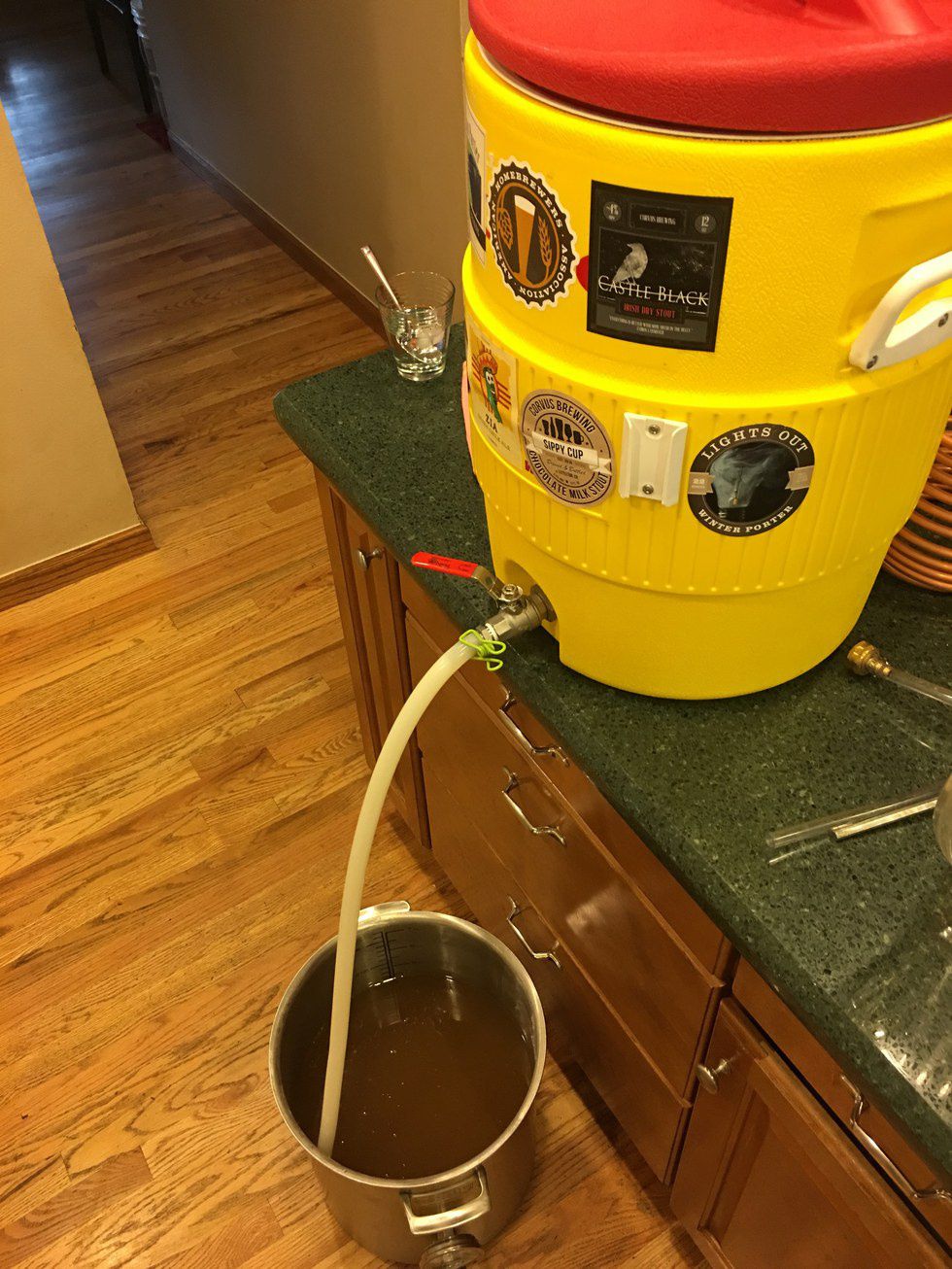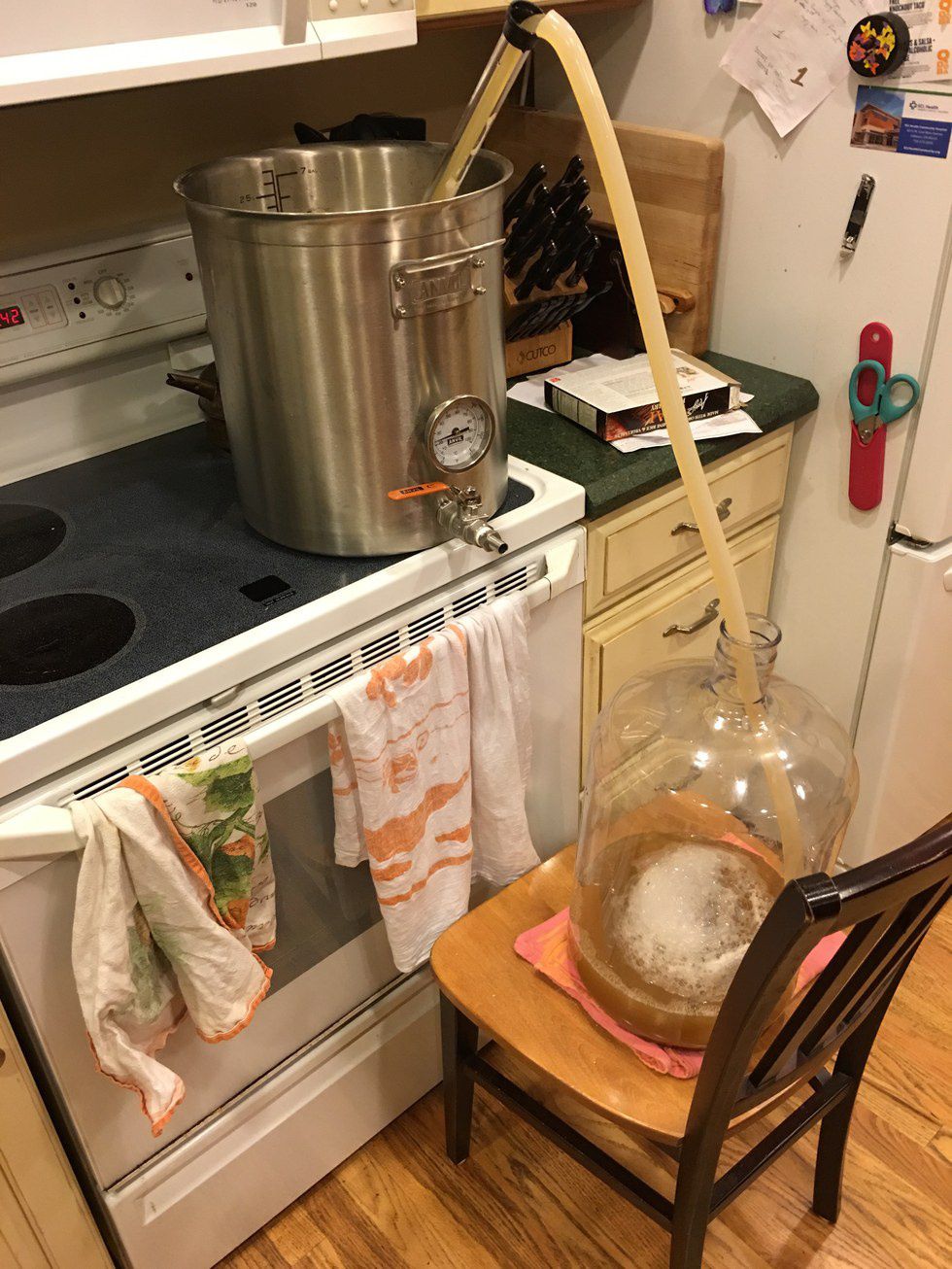My enchantment with beer began before I was 21. It was probably partially because of the mystery—I was cautious, not drinking a beer until my 21st birthday. But that didn’t stop me from learning all I could in the meantime. The history fascinated me. As I wrote about in my previous article, the spiritual dimension of beer—and its role in monasteries across Europe—further added to the mystery. But it wasn’t until the following Christmas that my obsession came to full fruition. That was the Christmas my family gave me a home-brewing kit. Sure enough, as soon as my dad and I started to brew our own batch of beer, my enchantment was complete.
The history of home brewing is thousands of years old. When beer first was brewed, there were not any commercial breweries. Making beer was done alongside any other household chore. Through the process of boiling the wort and fermentation, the resulting beer was safer to drink than the water supplies of many communities, especially once cities began to grow and develop. Thus, beer was necessary for life and health. It even provided am abundant supply of vitamins (though this is something that ancients had no knowledge of yet). Simply put, beer brewed in the home was a major factor in building settlements that then developed into civilization.
But in America, the story of home brewing had a major obstacle: Prohibition, and then the resulting outlaw of brewing beer at home. It was not until 1979 that home brewing again became legal, and by then, the American beer landscape was dismal. Flavorless, pale lagers made with adjuncts such as corn and rice dominated the industry. It was no surprise that home brewing became legal again. People wanted good beer, and they were willing to fight for their right to it. Thus in 1979, Americans again were allowed to brew their own beer, and the current renaissance of beer culture in America was underway.
My own exploration into beer has many roots, but central to the pursuit is the creativity that it requires, as I mentioned above. Being able to spend an afternoon with my dad creating something that we can then watch other people enjoy is a feeling that I cherish. In addition to this aspect, I love the historical importance of beer. As a history major at Gonzaga, beer allows me to explore so many different storylines from the past. Beer is present in some form in almost every culture around the world, from Andean chicha—a drink made with maize or other starchy roots that are chewed, utilizing saliva to convert the starches to sugars—to Märzen, a traditional Bavarian beer drunk during Oktoberfest. By exploring the countless styles, ingredients, recipes, techniques and functions of beer, I can truly come to know the heart of a culture. Beer is a pathway that leads to an understanding of others.
By continuing my own exploration of beer, especially here in Spokane, I am able to delve deeper into my own creativity and learn about countless cultures from around the world. I am lucky to live in a city like Spokane, where there are so many amazing breweries pushing themselves to their limits to explore so many different styles of beer. From my go-to brewpub, NoLi, to the up-and-coming Bellwether Brewing—a brewery that explores ancient and historical styles of beer like braggot and gruit—there is ample opportunity to taste the past.




















